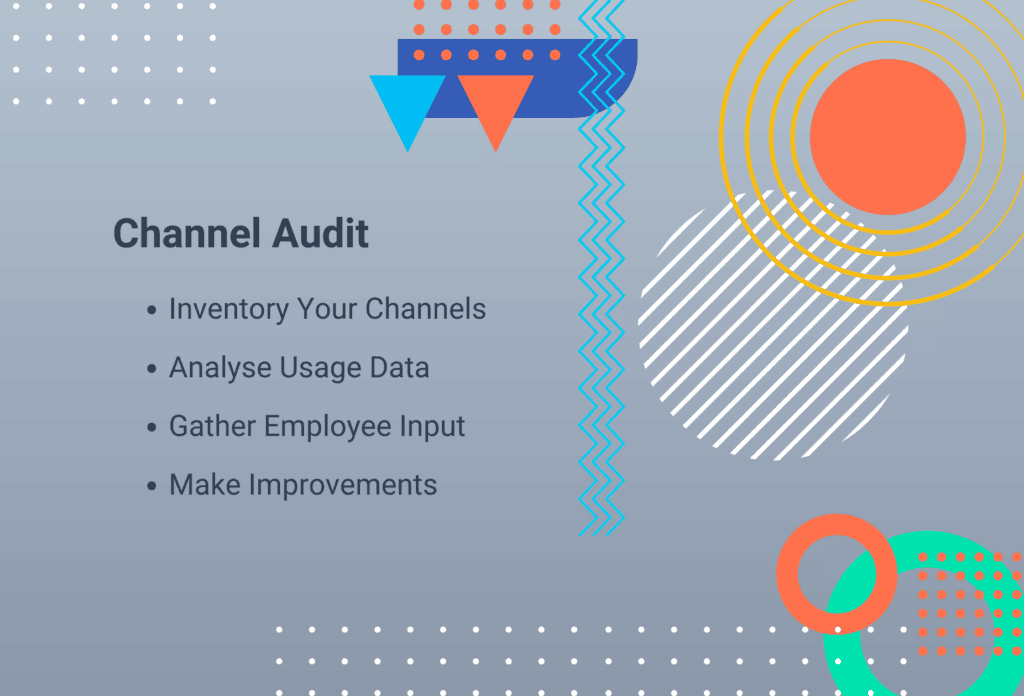
Managing internal communications channels is essential for ensuring clear and consistent messaging within an organisation. With so many options available, it can be challenging to deliver clear and consistent messages without overwhelming your audience. Ensuring internal communications channels are used strategically requires planning, careful timing, and regular evaluation.
In this post, we’ll cover how to manage internal communications channels effectively, optimise message frequency, avoid information overload, and perform channel audits.
Understanding Channel Frequency
The frequency of internal communications plays a critical role in employee engagement. Too many updates, even if they’re important, can lead to information fatigue. Employees may start ignoring messages if they feel bombarded, regardless of how valuable the content is. Conversely, too few updates can result in employees feeling uninformed or disconnected.
Best Practices
- Establish a communication calendar to coordinate the timing of messages across internal communications channels.
- Define clear guidelines for how often each channel should be used based on its purpose (e.g., daily updates on instant messaging tools, weekly email summaries, monthly newsletters).
- Coordinate with other teams to prevent multiple messages being sent at the same time.
💡 Plan communications like a campaign – space them out across internal communications channels to maintain engagement without overwhelming employees.
Avoiding Audience Overwhelm
Sending conflicting or simultaneous messages across multiple channels can confuse employees and dilute the impact of your communications. When employees receive the same message in different formats, they might ignore one version—or worse, assume the information isn’t relevant to them.
Best Practices
- Target messages to specific groups to reduce noise for employees who don’t need the information.
- Avoid cross-posting identical updates across multiple internal communications channels unless necessary.
- Clearly identify the purpose of each channel. For example, the intranet might house detailed information, while instant messaging is used for quick updates.
💡 Deliver focused messages to targeted audiences. Not everyone needs every piece of information.
Conducting Internal Communications Channel Audits
Channels should be regularly evaluated to ensure they are effective and serving their intended purpose. An audit helps you identify underused, redundant, or ineffective tools, as well as uncover gaps in your communication strategy.
Steps for a Channel Audit
- Inventory Your Channels: List all internal communication channels and their primary uses.
- Analyse Usage Data: Review metrics such as open rates, click-through rates, and employee feedback.
- Gather Employee Input: Survey employees to understand which channels they find most useful and why.
- Make Improvements: Streamline or repurpose underperforming channels and ensure your remaining tools align with organisational goals.
💡 Regular audits help keep your communication strategy fresh and relevant, ensuring employees are engaged with the channels you provide.

Balancing Transparency and Relevance
Transparency is critical in building trust, but too much information can overwhelm employees. Focus on delivering relevant updates that align with employees’ roles and organisational priorities.
Best Practices
- Use newsletters or town halls for broad organisational updates.
- Reserve team-specific channels for operational updates and action items.
- Utilise your intranet, for additional details where employees can access further information.
💡 Share information openly, but only include the details relevant to the audience’s needs and responsibilities.
Coordinating Multi-Channel Strategies
Using multiple channels effectively requires a coordinated approach to ensure each channel complements the others. For example, an email might direct employees to an intranet post for detailed information, or an instant message might highlight an urgent update already shared in a newsletter.
Best Practices
- Map out how each channel interacts within your overall strategy.
- Avoid repeating the same content verbatim across channels; instead, customise the format and level of detail for each platform.
- Communicate the purpose of each channel to employees, so they know where to find the right information.
💡 Think of your communications channels as an ecosystem—each channel should play a unique but interconnected role in your strategy.
Effectively managing internal communications channels requires strategic planning, consistent execution, and ongoing evaluation. By controlling frequency, preventing audience overwhelm, conducting regular audits, and tailoring your approach to your organisation’s needs, you can create a communications strategy that keeps employees informed, engaged, and aligned.
Start implementing these best practices today to streamline your internal communications and build a stronger connection with your workforce.
💡 Leverage tools like ICPlan to maintain clarity and control over your communication flow, reducing audience overwhelm while maximising engagement.
For more information on how ICPlan can help you manage your communications channels book a demo or start a free trail today.